A remote seal capillary type dp transmitter which is mounted on a closed tank. distance between both flanges is 1835 mm and density of fluid in tank is 1.15, transmitter is mounted below the high side flange. please give the calculation of URV and LRV values.
Answer
You need to know the capillary fill fluid specific gravity to make the calculation.
Calculating LRV and URV for dual remote seals on a closed tank
Assuming
- the minimum level is 4mA
- the maximum level is 20mA
- high side port is at the bottom tap
- low side port is at the top tap
The ranging of a remote seal transmitter is not guesswork, it is an arithmetic (multiplication and subtraction) calculation requiring four or five values that are specific to the application:
- specific gravity (SG) of remote seal fill fluid (SGf value)
- specific gravity of the process liquid (SGp value)
- Elevation distance between taps, the lower seal (high side) and upper seal (low side) (d value)
- distance between bottom tap and maximum level height (what 20mA represents) (b value)
- distance between bottom tap and minimum level (what 4mA represents) (a value)
It does not matter whether the transmitter is at, below or above the bottom tap when dual remote seals are used. The LRV and URV are the same for all three conditions.
Refer to the illustration:
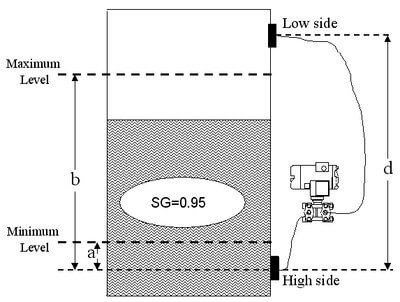
LRV = (SGp * a) – (SGf * d)
URV = (SGp * b) – (SGf * d)
In many cases, the lower level (4mA) is where the bottom tap is, so value a = zero.
When a = 0, then (SGp * 0) = 0.
Hence, LRV = 0 – (SGf * d), which results in a negative value.
That’s correct. Do not be surprised if the LRV is a negative value. It frequently is negative, as well as the URV.
Remote seal transmitters assembled and filled by the manufacturer will have a part number that includes a code for the fill fluid and usually the tag will show the fill fluid too.
Commonly used capillary fill fluid specific gravities range from 0.26 for glycerin to 1.97 for Halocarbon. Guessing at the fill fluid can lead to large and significant errors. Determine the actual fill fluid.
Example: Dual remote seals on closed tank
a = 0 (bottom tap is minimum level point)
b = 108 inches (maximum liquid level)
d = 120 inches (elevation distance between the high and low taps)
SGp = tank fluid SG = 0.95
SGf = fill fluid SG = 0.934
1) Calculate the LRV
LRV = (SGp * a) – (SGf * d)
At min level (empty), there is 0 process liquid pressure on the high side, so SGp = 0.
A = 0, so (SGp * a) = 0″
The fill fluid exerts a pressure of (SGf * d) or (0.923 * 120″) on the low side
(SGf * d) = 0.934 * 120″ = 112.08″
LRV = (SGp * a) – (SGf * d)
LRV = 0″ – 112.08″ = -112.08″
LRV = -112.08
2) Calculate the URV
URV = (SGp * b) – (SGf * d)
At the maximum fluid level, there is a pressure of (SGp * b), or (0.95 * 108″) on the high side.
(SGp * b) = 0.95 * 108″ = 102.6″
URV = (SGp * b) – (SGf * d)
102.6″ – 112.08″ = – 9.48″
URV = -9.48
3) Transmitter’s range
LRV = 4mA = -112.80″ w.c.
URV = 20mA = -9.48″ w.c.
The transmitter’s range is -112.08″ to -9.48″ w.c., a span of 102.6″ w.c., which is the head pressure of 108″ of liquid with a SG of 0.95.
Articles You May Like :
Guided Wave Radar Level Sensor
RF Admittance Level Transmitter
Capacitive Level Switch Principle

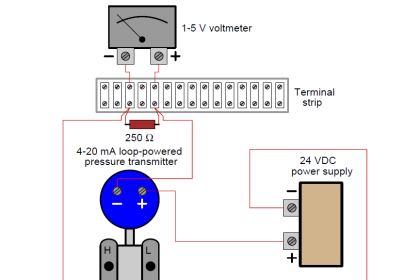
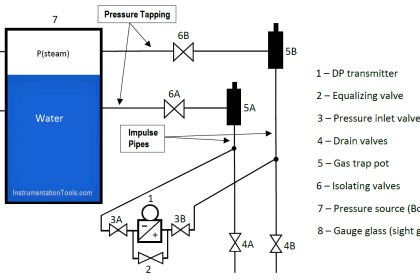
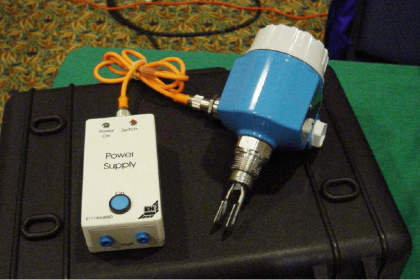
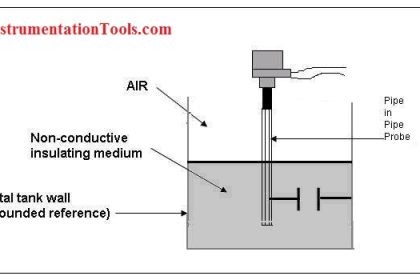
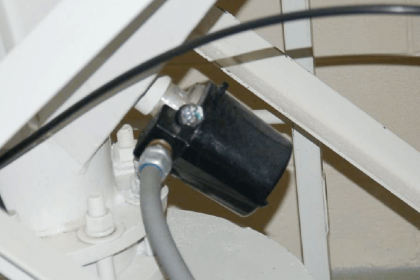
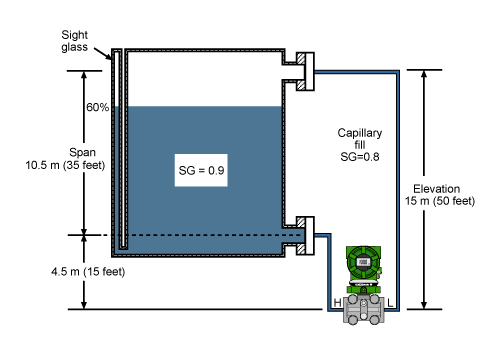
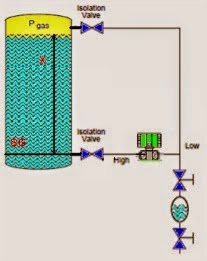
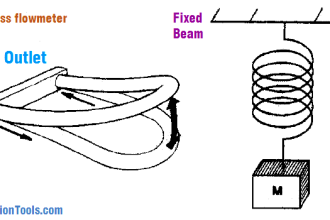

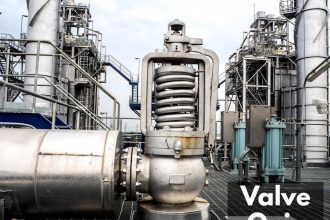
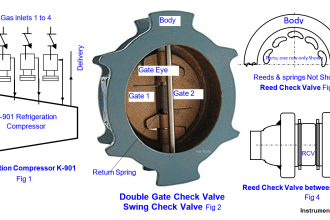

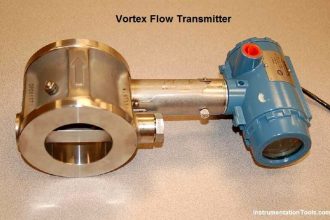
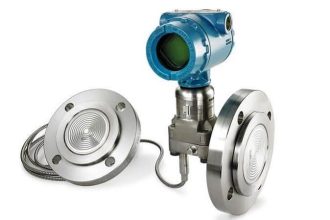

Hai there, what happen if the transmitter located higher than top tapping (low tapping)? Can you explain the calculation?
It does not matter whether the transmitter is at, below or above the bottom tap when dual remote seals are used. The LRV and URV are the same for all three conditions.
sir, how can we define the Distance of maximum liquid level (B)?
Hello sir, how can i define the minimum level (a) , maximum level (b) and also at which point i have to take Hish side and low side tapping.
Give me reply sir As soon as Possible